- Home
- Mack Maloney
UFOs in Wartime: What They Didn't Want You To Know
UFOs in Wartime: What They Didn't Want You To Know Read online
Mack Maloney
UFOs in Wartime: What They Didn't Want You To Know
For my best friend
ACKNOWLEDGMENTS
Thanks to Warren Thompson, Erik Simonsen, Mike Machat, Larry Blumenthal and Walter Boyne for help with the photos. For their guidance, Keith Chester and Jerome Clark. Also Amanda Ng, Tom Colgan, Dominick Abel and Erica Varela. Music by Sky Club. Special thanks to Margaret MacDonald and Mike Dominic, www.paladinfreelance.blogspot.com.
Go to www.UFOsinWartime.com for more information
FOREWORD
I was happy to oblige when Mack Maloney asked me to write the foreword to his new book, UFOs in Wartime. Having written Strange Company: Military Encounters with UFOs in WWII, I was more than familiar with the subject. Covering the years 1933 through 1945, Strange Company is an effort focused on UFO sightings made in both the European and Pacific theaters during the Second World War. Mack’s book, on the other hand, provides a much broader view of a phenomenon that’s been reported during every major military conflict since the First World War.
These conflicts have filled the skies with man’s aeronautical wonders, an ever-expanding array of airplanes, jets, rockets, drones, flares, and balloons. Natural and celestial phenomena also made appearances among this aerial war material. But something else has been reported in war-torn skies around the world as well — unconventional objects that defy all explanation. Some of these baffling objects seem to come straight from the annals of science fiction. What makes these observations so important is that in many cases they’ve been reported by highly trained military aviation personnel — people with great observational skills — during a time when their lives depended on accurate identification.
UFOs in Wartime provides a valuable work for both the casual reader and the student of unidentified flying objects. You’ll revisit a number of important UFO cases that still remain perplexing as well as many being reported here at length for the first time. In this accounting of mysterious observations, you’ll learn that while our aeronautical progress has advanced through the decades, unknown aerial objects were, and still are, being reported.
I applaud Mack’s curiosity and willingness to explore such a controversial topic. While Mack does not claim to know what these sightings represent, one thing is for sure: UFOs in Wartime will ignite many questions and provide much fuel for thought.
Keith Chester
May 11, 2011
PART ONE
Early Sightings
1
In the Beginning
On October 28, 312, Roman emperor Constantine I and his army were advancing toward Rome to do battle with his archrival, Maxentius.
At stake was nothing less than control of the Roman Empire. Scribes traveling with Constantine reported that shortly before the momentous battle, a mysterious object appeared in the sky and hovered over the army. Glowing and shaped like a cross, it was seen by all, including Constantine. The emperor came to believe the object’s appearance was a message that his men should paint the sign of the cross on their shields before they went into combat against Maxentius. Constantine so ordered his troops, and they went on to win the historic Battle of Milvian Bridge. As a result, Constantine not only became sole ruler of Rome, but he made Christianity, which previously had been outlawed, the official religion of the Roman Empire.
It’s almost too overwhelming to contemplate, but what would our world look like today had it not been for that mysterious object in the sky?
* * *
UFOs exist — we just don’t know what they are yet.
Those wise words have been written other places before, but they are very true nonetheless.
What some believe to be UFOs are mentioned throughout the Bible. They can be found on ancient coins and in cave dwellers’ art. Chinese history tells of soldiers soaring through the skies in fantastic airships, using fire-breathing dragons as their wingmen. The ancient scripts of India describe in detail incredible aerial machines big enough to be flying cities. Likenesses of UFOs can be found on stone carvings from Egypt to Mesopotamia to the great Mayan civilizations of Central America.
UFOs have always been with us — and they’re still with us today. We make movies and TV shows about them. They appear in modern literature, comic books and video games. Museums and monuments are built in their honor. And they are mysterious. But that doesn’t mean we don’t know a few things about them.
They frequently appear at night, sometimes in groups, but mostly just as one or two. They can fly faster and maneuver unlike any man-made aerial machine. They are generally benign, though they may or may not abduct humans in order to see what makes us tick. And they seem to be able to come and go at will, anytime, anywhere.
But UFOs have also displayed another intriguing tendency: They have revealed themselves with alarming frequency during times of war and human conflict. Incredibly, there were reports of a UFO flying over Normandy on D-Day, June 6, 1944. There are numerous accounts of UFOs, dubbed “foo fighters,” being spotted by Allied and Axis pilots throughout World War II. World War I also had its share of UFO sightings and aerial visions. The Korean War produced a number of particularly bizarre episodes. During the 1950s and ’60s, in the midst of the Cold War, America’s skies seemed to be virtually raining UFOs. There are even outlandish stories of UFOs aiding George Washington in winning the American Revolution.
The numbers seem to show that UFO sightings spike in times of war, or what could be called imminent war, especially from the mid-twentieth century on. But what does this mean? Is it because there are more aircraft flying during modern-era wartime — bombers, fighter planes, transports — so there are more opportunities for people to see strange flying things?
Or is someone looking in on us? Watching us as we go to such great lengths to kill each other?
This book is a collection of exactly that: incidents in which UFOs have made their presence known at some of the most unusual times of conflict, frightening some, confusing and puzzling many more — but rarely if ever interfering, which might be the most tantalizing clue of all.
For the most part, the stories here are a recounting of episodes uncovered and researched by other people, many of whom have dedicated their lives to documenting and studying the mind-bending riddle of UFOs. This esteemed list includes Jerome Clark, Dr. Richard Haines, the late Dr. J. Allen Hynek, Bruce Maccabee, Captain Edward J. Ruppelt (a military man caught in the middle), Jacques Vallee, Stan Gordon, Timothy Good, Robert Hastings and Keith Chester, who literally wrote the book on foo fighters and dragged the start of the UFO era back to the early 1940s, where it belonged.
When this great mystery is finally solved, people will look back on these visionaries and say: We couldn’t have done it without them.
Sightings from Ancient to Modern Times
332 B.C.
Constantine may not have been the only famous warrior to have strange flying objects affect the outcome of his military campaign.
The renowned radio commentator and UFO author Frank Edwards once related what some might consider a fanciful story about Alexander the Great having an unearthly encounter during his bid to conquer the known world in the fourth century B.C. *(See the accompanying reading list at the back of this book.)
Alexander’s huge army had come to a strategic river crossing. The Macedonian mastermind had to swiftly move his forces across the waterway in order to continue his campaign. But just as he was about to ford the river, two strange craft suddenly appeared in the sky.
Alexander’s own historian described the craft as shining silvery shields with fire spitting from their rims. As Alexander
watched in horror, the strange craft dove repeatedly at his men, to the point where they, their horses and his war elephants became so panicked, they refused to cross the river.
A similar if even more bizarre incident was said to have happened to Alexander during the siege of Tyre in 332 B.C. But this time the strange flying objects seemed sympathetic to Alexander’s cause.
Located on an island off of present-day Lebanon, the Persian-controlled city of Tyre had incredibly thick walls and well-designed defenses. These had stymied Alexander’s efforts to conquer it for months.
One day, the “flying shields” were back. Five of them suddenly appeared in the sky over Tyre. Once again, according to Edwards, after slowly circling the city and allowing soldiers on both sides to see them, one of the shields let out a lightning bolt that crumpled a large section of the wall protecting Tyre.
This breach was large enough for Alexander’s men to push through and eventually capture the city.
1034 A.D.
Even a casual reader of UFO literature has to be familiar with the term “cigar-shaped object.”
The “CSO” is among the most frequently reported of all UFO shapes, having been spotted with puzzling consistency throughout the centuries, and never more so than in times of war. Maybe it should be no surprise then that what’s considered the first-ever printed pictorial representation of a UFO was of the ubiquitous cigar-shaped object.
In his book, UFOs in Space: Anatomy of a Phenomenon, the great UFO writer and researcher Jacques Vallee tells the story of an early typeset book called Liber Chronicarum. Printed in 1493, and now preserved in a museum at Verdun, France, it describes within its pages an incident that occurred in 1034 in which a cigar-shaped object was seen flying through the early evening European sky. According to the text, the object was first spotted heading south to east. But then it was seen turning abruptly to the west and heading into the sunset.
The accompanying illustration shows the cigar-shaped object, flames around it, rocketing above the medieval countryside. The picture has baffled UFO researchers ever since. What could have inspired such a tale and such an illustration, if not an actual sighting?
1235
Jacques Vallee also writes about an incident in 1235 that might well have been the first time humans decided to investigate a UFO sighting.
It happened in Japan. One night, a high officer named General Yoritsume and his army were settling down in their camp when they spotted mysterious lights in the sky. The general and his troops watched in astonishment as these lights performed amazing aerobatic maneuvers, such as circling endlessly and flying in loops.
Baffled by the bizarre aerial display, General Yoritsume ordered a scientific investigation of what he’d just witnessed.
Giving simple and even simplistic explanations for UFOs would become an art form hundreds of years later. Those who practice it these days would have been proud of Yoritsume’s scientists, for the explanation they gave the general oozed comfort and calm.
“The whole thing is completely natural,” Yoritsume was told about the mystery lights. “It is only the wind making the stars sway.”
Strangely, a half century before, a document detailing the sighting of another unusual object flashing across the night sky was written. According to Vallee, this time in his book, Passport to Magonia, the document describes the object as a “flying earthenware vessel.”
Or in other words, a “flying saucer.”
1347
Things were bad in Western Europe during the years of 1347–50.
In this case, it wasn’t warfare that brought death and misery. Rather, these were the years of the fearsome Black Death, the bubonic plague that swept over the Continent, killing, by some counts, more than 100 million people and changing civilization’s cultural landscape for the next century and a half.
While conventional science tells us that the fierce pandemic was caused by bacteria carried by rat fleas, there were also persistent reports from the time of strange flying objects moving low through the sky, leaving a trail of suspicious vapor in their wake. Wherever and whenever these objects were seen, the plague would soon break out in that area.
Further reports from this horrible time describe mysterious figures, origins unknown, who dressed in black hoods and robes and used scythes to unexplainably kill livestock. These medieval “men in black” would later become associated with pending death. Today, they are better known as the Grim Reapers.
Other strange occurrences while the plague swept Europe included reports of “comets” flashing through the troubled night, strange animals washing up on European shores and many times, sounds like thunder being heard even when skies were clear.
1492
On the night of October 12, 1492, a man named Pedro Gutierrez was serving as lookout on a three-masted ship nicknamed “the Galician.” The man beside him was named Christoffa Corombo. They were gazing out on the dark horizon of the Atlantic Ocean, intently looking for something.
What they saw was a light glimmering at a great distance. It continually appeared and disappeared during the night. When visible, the two men saw it moving up and down and flashing sudden explosions of light and intensity.
The light captivated the two men, keeping their attention on the horizon. The man named Corombo was captain of the Galician. We know him today as Christopher Columbus and his ship by its official name: the Santa Maria.
And four hours after the strange light was first seen acting mysteriously in the sky, Columbus spotted land.
1561
At dawn on April 4, 1561, the citizens of Nuremberg, Germany, awoke to nothing less than a titanic air battle going on over their city.
Hundreds of witnesses saw a pair of large dark cylinders launching a variety of shapes variously described as black and blue spheres, red crosses and aerial disks. Then, once these objects were launched, they began fighting each other while hundreds watched — for more than an hour.
The incredible event was reported by the Nuremberg Gazette. Additionally, an artist named Hans Glaser did a woodcut of the scene depicting the frenzied battle.
As with the CSO depicted in the previously mentioned Liber Chronicarum, what could have spurred this newspaper story and woodcut if not a real event?
1777–78
What might be the strangest UFO story in U.S. military history — and there are many — is that George Washington may have encountered extraterrestrials during the dark days at Valley Forge.
According to the website book-of-thoth.com, this story comes from a Scottish researcher named Quentin Burde, who claims that in the winter of 1777–78, a tribe of Native Americans that Washington befriended while his exhausted, demoralized army was camped at Valley Forge was actually a group of green-skinned ETs.
Springing from a reinterpretation of papers supposedly written by Washington’s military secretary, Burde says he found references to “hovering lodges” and a tribe called the Greenskins who lived in a glowing globe in the woods nearby, a globe that was “sometimes there and sometimes not.”
The Greenskins, Burde claims, provided the Continental Army with military intelligence and reconnaissance, and possibly advanced technology that helped turn the tide of the war.
Burde is quick to add, though, that he believes Washington had no idea he was dealing with creatures from another planet.
Rather, according to Burde, the man who would go on to win the Revolutionary War and become the first president of the United States probably thought he was talking to a powerful Indian war chief or a medicine man proficient in the ways of magic.
Unbelievable? Maybe.
But as strange as this story may sound, even stranger things are yet to come.
PART TWO
World War I and the 1930s
2
Something Strange in the Air
The Scareships
As the story goes, one day in the spring of 1917, with World War I raging across Western Europe, two Fokker triplanes of the
German air force’s Jagdstaffel Jasta 11 took off from their base in occupied France and headed for the skies above Belgium. They were looking for Allied warplanes.
One of the Fokkers was piloted by Captain Peter Waitzrik; the other by Captain Manfred von Richthofen, the famous “Red Baron.”
It was a clear morning, with few clouds and a bright blue sky. Von Richthofen was Germany’s top fighter ace at the time. He’d already received the Blue Max, the country’s highest military award, and within a month he would be leading his legendary Red Baron’s Flying Circus.
Not long into their patrol, Waitzrik and von Richthofen spotted something in the sky ahead of them. It was not an enemy fighter. According to Waitzrik, it was a flying object more than 100 feet in diameter, bright silver in color and shaped like a saucer.
“We were terrified,” Waitzrik told the British tabloid the World Weekly News years later. “We had never seen anything like it. But the United States had just entered the war, so we assumed it was something they’d sent up.”
Von Richthofen immediately opened fire on the object, hitting it.
“The thing went down like a rock,” Waitzrik said. “It sheared off tree limbs as it crashed in the woods.”
Waitzrik and von Richthofen then watched as two occupants climbed out of the strange craft and escaped into the forest.
“The Baron and I gave a full report on the incident back at headquarters,” Waitzrik said. “But they told us not to mention it ever again.”
For years afterward, Waitzrik assumed the gleaming silver disk was some sort of Allied secret weapon — until the flying saucer craze of the late 1940s convinced him otherwise.
“That’s when I realized this thing looked just like those saucer-shaped spaceships that everybody [started] seeing,” Waitzrik said. “It’s been over eighty years now, so what difference could it possibly make? But there’s no doubt in my mind that it was no U.S. reconnaissance plane the Baron shot down that day. It was some kind of craft from another planet and those guys who ran off into the woods weren’t Americans.”

 Strike Force Bravo s-2
Strike Force Bravo s-2 Operation Caribe ph-2
Operation Caribe ph-2 Beyond Area 51
Beyond Area 51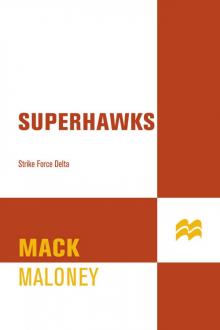 Strike Force Delta
Strike Force Delta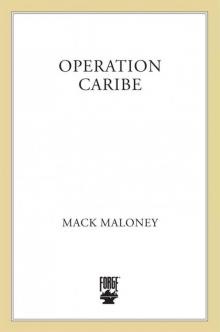 B00447820A EBOK
B00447820A EBOK Strike Force Alpha
Strike Force Alpha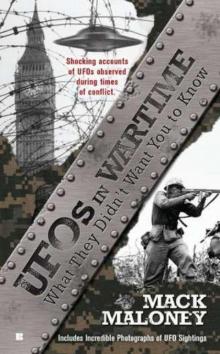 UFOs in Wartime: What They Didn't Want You To Know
UFOs in Wartime: What They Didn't Want You To Know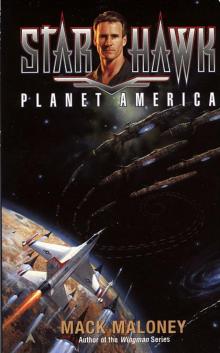 Planet America s-2
Planet America s-2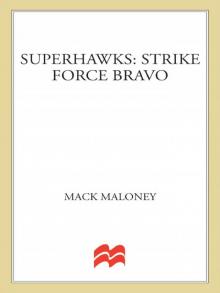 Strike Force Bravo
Strike Force Bravo The Circle War w-2
The Circle War w-2 Operation Sea Ghost ph-3
Operation Sea Ghost ph-3 Strike Force Delta s-4
Strike Force Delta s-4 The Wingman Adventures Volume One
The Wingman Adventures Volume One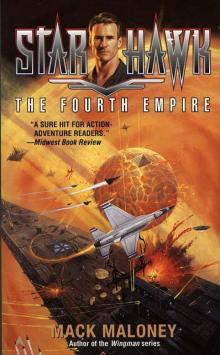 The Fourth Empire s-3
The Fourth Empire s-3 Battle at Zero Point s-4
Battle at Zero Point s-4 Attack on Area 51
Attack on Area 51 Chopper Ops
Chopper Ops B003IKHEWG EBOK
B003IKHEWG EBOK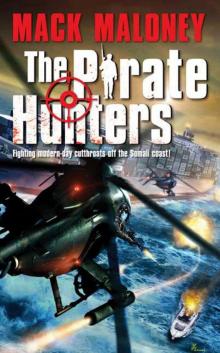 The Pirate Hunters ph-1
The Pirate Hunters ph-1 Chopper Ops co-1
Chopper Ops co-1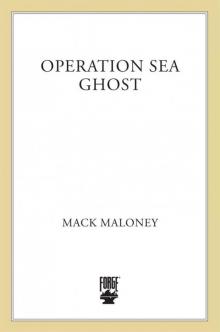 B005J4EW5G EBOK
B005J4EW5G EBOK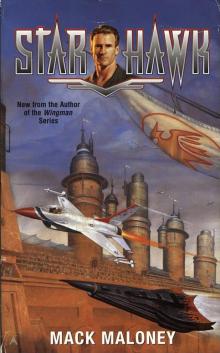 Starhawk s-1
Starhawk s-1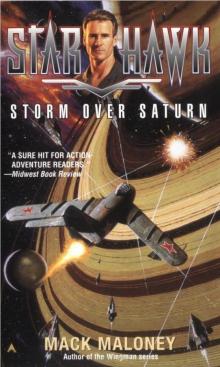 Storm Over Saturn s-5
Storm Over Saturn s-5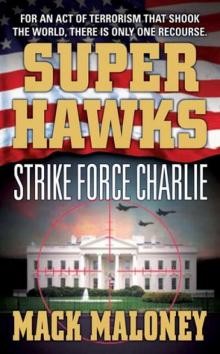 Strike Force Charlie s-3
Strike Force Charlie s-3